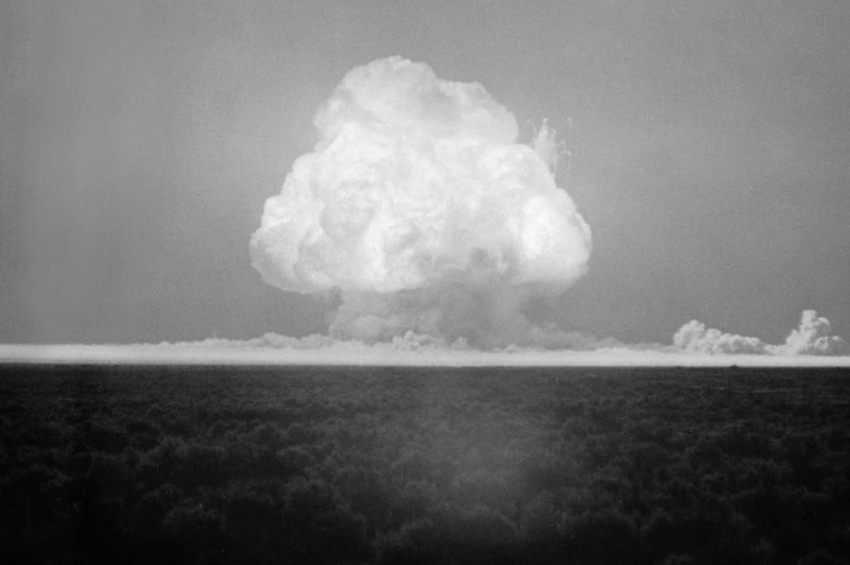First victims of the atomic bomb were Americans, not Japanese
Unlike widespread believe that the Japanese residents of Hiroshima and Nagasaki were the first people to be killed in atomic bomb explosions, this is not true. Before the U.S. Air Force dropped the bombs over these cities, on 6 and 9 August 1945, killing at least 120,000 civilians within minutes, the American military exposed U.S. citizens to radiation on American soil almost one month earlier.
The Trinity test was the first ever atomic explosion as part of the Manhattan Project experiment, resulting in infant deaths, cancer, and enduring health issues for residents around the detonation site in New Mexico.
The test took place on 16 July 1945, under the leadership of J. Robert Oppenheimer, more than 200 miles from the Los Alamos Laboratory where the 25-kiloton-TNT bomb with Plutonium was built.
More to read:
[video] How many nuclear warheads does Putin actually have?
Unfortunately, the testing site, located in the Tularosa Basin, was not isolated, and nearly half a million residents lived within a 150-mile radius.
The first victims were thousands of individuals, mainly Hispanos and Native Americans, who were exposed to radioactive fallout.
Some lived as close as 12 miles away from the detonation site.
Despite hearing and feeling the explosion around 5:30 in the morning, residents were misinformed by the U.S. government, which downplayed the incident as an accidental explosion of ammunition and pyrotechnics.
The authorities had not evacuated the area and had notified its residents of the explosion. Nor were there any warnings of health risks, and even after the bombings of Hiroshima and Nagasaki a few weeks later, residents were kept in the dark about the potential effects of the explosion.
One immediate consequence was a surge in infant deaths. In 1947, health care provider Kathryn S. Behnke expressed concern about approximately 35 infant deaths in Roswell in August 1945, just a month after the Trinity test. Despite the known health risks associated with nuclear radiation, the government dismissed these concerns and failed to inform the affected communities.
More to read:
A new nuclear disaster is looming in eastern Ukraine
Over the subsequent decades, those exposed to the blast developed various health problems, including cancer and heart disease. The term "downwinders" emerged as people near Trinity and other nuclear test sites identified the connection between their health issues and the government's nuclear tests.
.jpg)
The wirings of the "gadget" atomic bomb, which was detonated at the Trinity test site. Credit: Rarehistoryphotos.com
The Radiation Exposure Compensation Act of 1990 provided compensation to some downwinders near the Nevada test site but excluded those from the Trinity test site.
In 2005, the descendants of families affected by radiation exposure in the Tularosa formed a consortium to advocate for their rights, demanding both official apology and adequate compensations.
Although the government acknowledged harm through the 1990 act, it continues to neglect the first individuals exposed to radiation from an atomic bomb to this date.
A 2010 report by the Centers for Disease Control and Prevention concluded that exposure rates from the Trinity test stood at levels 10,000 times higher than allowed 65 years after the blast.
***
NewsCafe is a small, independent outlet that cares about big issues. Our sources of income amount to ads and donations from readers. You can buy us a coffee via PayPal: office[at]rudeana.com or paypal.me/newscafeeu. We promise to reward this gesture with more captivating and important topics.







